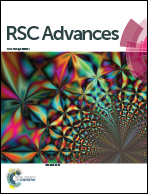Control and modelling of capillary flow of epoxy resin in aligned carbon nanotube forests
Abstract
This paper examines the mechanism of infiltration by capillary flow of epoxy resin into vertically-aligned carbon nanotube forests. The resin viscosity during curing was characterized by rheometry. Carbon nanotube forests were brought into contact with resin at a range of times during curing, therefore at a range of viscosities. The penetration of the resin into the forests was measured using electron microscopy, X-ray micro-computed tomography and energy-dispersive X-ray spectroscopy, the latter relying on a chromium-complex dye additive which acts as a marker for the presence of resin. Experimental results were compared to a simulation based on the Implicit Lucas–Washburn equation for capillary flow. It was found that prior to the resin gel point, the resin penetrates through the full height of the forest. Close to the gel point, the flow into the forest ceases, leaving unwetted regions of nanotubes. Understanding the relationship between resin flow in nanotube structures and the resin viscosity and curing has important application in the fabrication of nanocomposite materials. This “partial wetting” effect is a key requirement for a previously proposed method for the fabrication of carbon nanotube composites by additive manufacture (AM) which would provide strong interlayer reinforcement combined with the versatility of AM.


 Please wait while we load your content...
Please wait while we load your content...